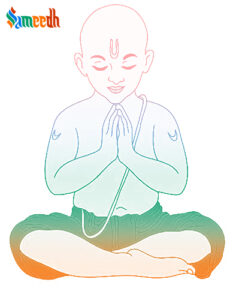The “janoi” is a sacred thread worn by some Hindus, especially among the Brahmin community, as a symbol of initiation and a commitment to spiritual and moral duties. Changing the janoi involves a specific process, and it is typically done during certain rituals or ceremonies.

Janoi is also known as Yagnopavit, the Sacred Thread. Here are general steps that may be followed, but keep in mind that the specific procedures can vary based on regional and cultural traditions:
- Consult a Priest:Before changing the janoi, it’s advisable to consult with a knowledgeable priest or a religious authority. They can guide you through the proper rituals and provide insights into the significance of the ceremony.
- Choose an Auspicious Time:Changing the janoi is often done during specific times or auspicious occasions, such as during religious ceremonies, festivals, or other significant life events. Timing can play a crucial role in Hindu rituals.
- Purification Rituals:Before changing the janoi, the person may need to undergo purification rituals, such as taking a bath or performing specific prayers. The idea is to purify oneself both physically and spiritually.
- Selecting the New Janoi:The new janoi may be made of cotton or a specific material according to tradition. It is generally a sacred thread with a specific number of strands. The priest or religious authority may guide the individual in selecting an appropriate janoi.
- Mantras and Prayers:During the janoi changing ceremony, various mantras and prayers may be recited. The individual may chant specific Vedic verses or prayers that signify the importance of the janoi and the commitment it represents.
-
Gayatri Mantra: This is the most important mantra and is recited while wearing the new sacred thread. It is a universal prayer enriched in the Vedas. The Gayatri Mantra is as follows:
“Om Bhur Bhuvah Svah Tat Savitur Varenyam Bhargo Devasya Dhimahi Dhiyo Yo Nah Prachodayat.”
-
Yagnopavit Changing Mantra: While changing the Janoi, a specific mantra is recited that signifies the reason for changing the thread. It goes something like:
“Yagnopavitam Paramam Pavitram Prajapateryatsahajam Purastat Ayushyamagryam Pratimuncha Shubhram Yajnopavitam Balamastu Tejah.”
-
Kamokarshit Mantra: This mantra is sometimes recited before the actual changing of the thread. It is meant to absolve the wearer of past sins or impurities. The mantra is:
“Kamokarshit Manyurakarshit Namah.”
- Ceremonial Thread Transfer:The actual changing of the janoi involves the priest or a respected elder ceremonially transferring the sacred thread from the old one to the new one. This symbolic act represents the continuity of one’s commitment to spiritual and moral duties.
- Blessings:After the janoi is changed, it is common for the priest or elders to offer blessings and guidance. The individual may receive words of wisdom and encouragement for their continued spiritual journey.
- Follow-Up Rituals:Depending on local traditions, there may be additional rituals or customs to follow after changing the janoi. This could include specific prayers, offerings, or acts of charity.
Remember, these steps are a general guideline, and the actual procedures can vary based on cultural and regional differences within the diverse spectrum of Hindu traditions. If you’re considering changing your janoi, it’s advisable to consult with a knowledgeable religious figure or priest who can guide you through the process based on your specific community and tradition.